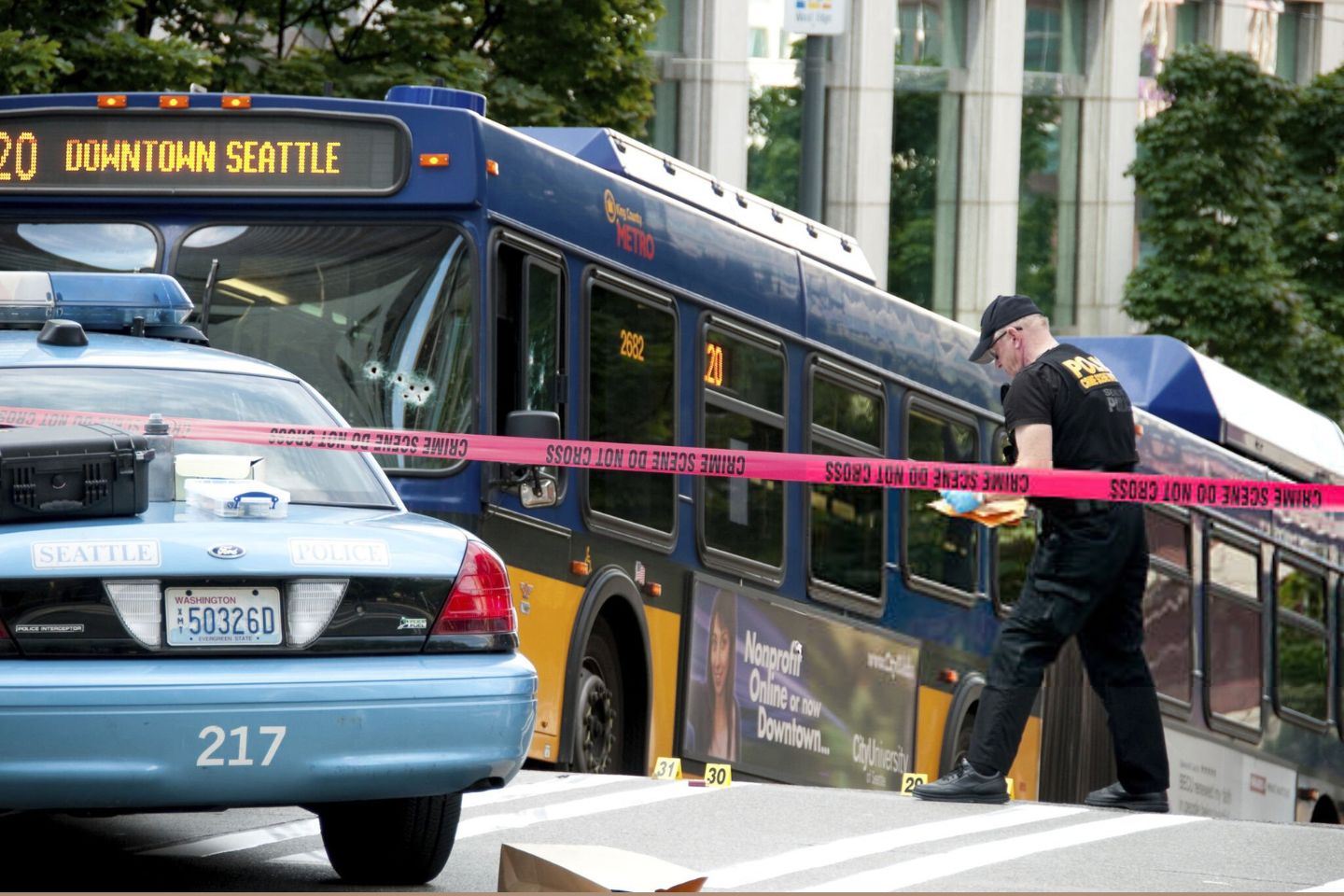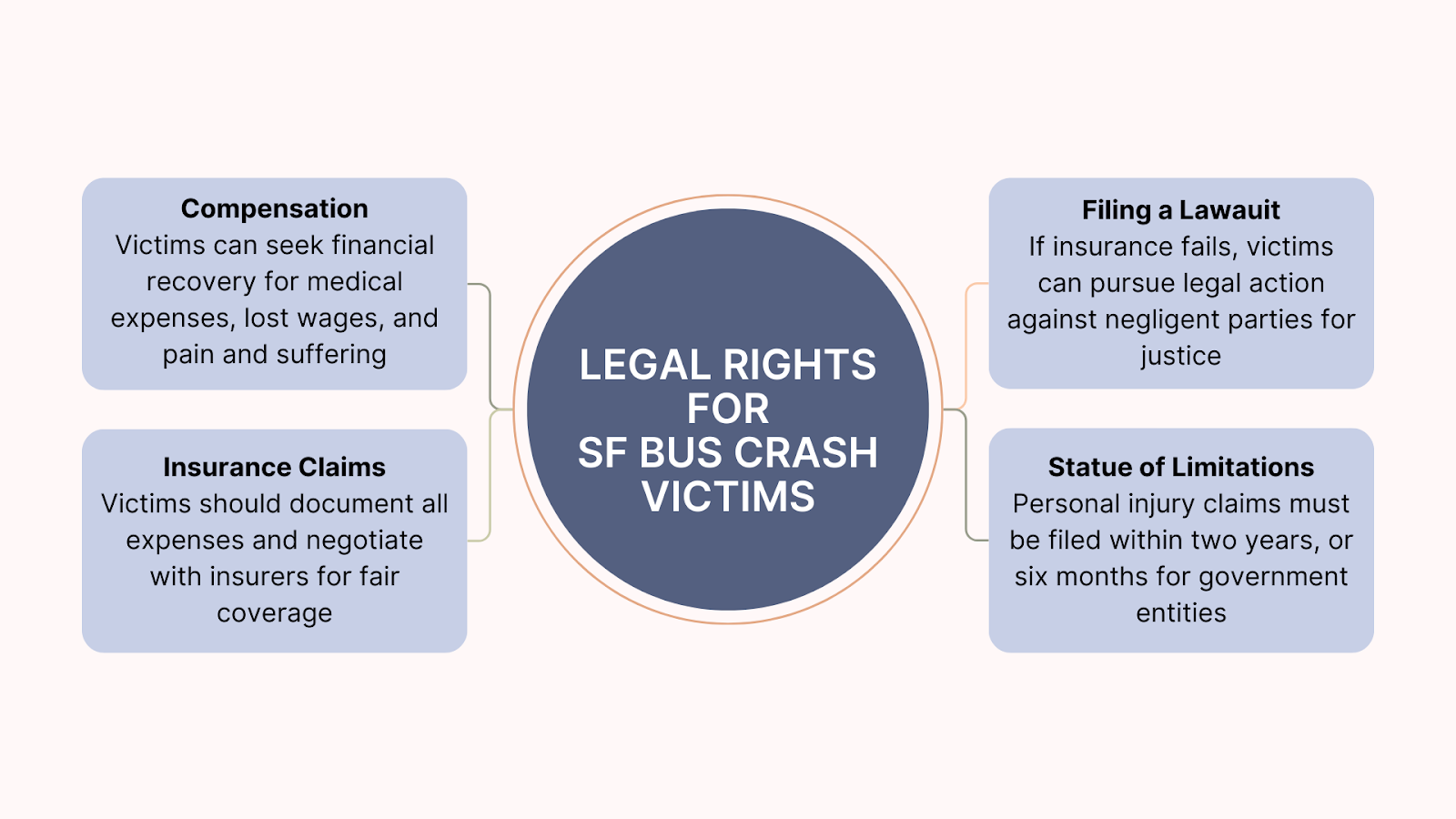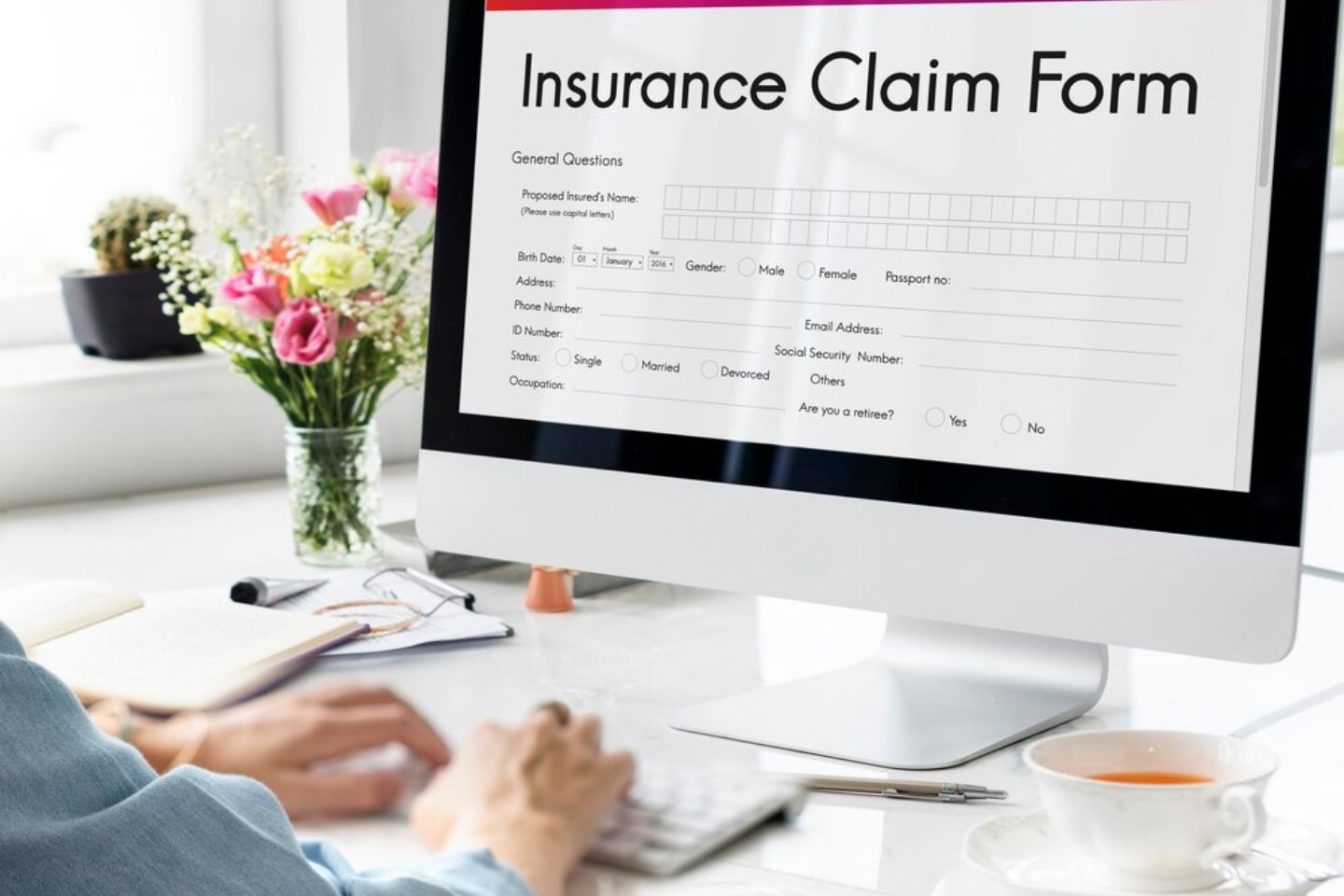A bus crash in San Francisco can happen in the blink of an eye, but its consequences can last a lifetime. It’s not just about the immediate shock or the physical injuries but the confusion, the mounting medical bills, and the uncertainty of what to do next that can overwhelm anyone involved.
If you’re seeking guidance after being impacted by such an incident, you’re in the right place. This article is your resource to navigate through the aftermath of an SF bus crash. We’ll provide you with clear, actionable information on how to handle the legal complexities and secure the support you deserve.
What Effects Can a Bus Crash Have on You in San Francisco?
Despite the reduced commuting and travel during the COVID-19 pandemic, San Francisco experienced a significant number of vehicular accidents.
According to the Federal Motor Carrier Safety Administration (FMCSA), there were 5,904 large trucks and buses involved in fatal crashes in 2021, marking an 18-percent increase from 2020. The rate of large truck and bus fatalities per 100 million vehicle miles traveled also rose from 0.176 to 0.191.


Focusing specifically on San Francisco, the city’s municipal transportation vehicles, known as Muni, reported an accident rate of 5.8 collisions per 100,000 miles during the 2019-2020 fiscal year. This statistic, while particular to San Francisco, mirrors the broader pattern of vehicular accidents in urban areas.
San Francisco has witnessed several bus accidents in the past year. These incidents do more than just add to the statistics; they bring to light the personal stories and impacts that go beyond numbers, emphasizing the real-life consequences of these accidents.
Some of the common consequences include:
- Physical Injuries: Ranging from minor cuts and bruises to more severe injuries like fractures, head trauma, and spinal injuries.
- Emotional Trauma: Psychological impacts such as stress, anxiety, and post-traumatic stress disorder (PTSD) are common among crash survivors.
- Financial Burden: Medical bills, potential loss of income, and the cost of ongoing healthcare can create significant financial strain.
- Legal Complications: Navigating the aftermath of a bus crash often involves dealing with insurance claims, potential lawsuits, and seeking compensation for damages.
- Lifestyle Changes: Long-term recovery may necessitate changes in lifestyle, impacting one’s ability to work, engage in social activities, and maintain a certain quality of life.
If you or someone you know has been impacted by an SF bus crash, The Personal Injury Center is here to help. We can connect you with experienced lawyers in the area who specialize in handling such cases, offering the guidance and support you need to navigate these challenges.
Who is Liable in a Bus Accident?


Determining liability in a bus accident in San Francisco is often more complex than in typical car accidents. This complexity arises from the fact that multiple parties could be potentially responsible.
Here’s a breakdown of who might be liable and under what circumstances:
- The Bus Driver: If the accident occurred due to the driver’s negligence (failure to exercise reasonable care), such as speeding, distraction, or violation of traffic laws, the driver could be held liable.
- The Bus Company or Transit Authority: In cases where the accident is due to factors like poor bus maintenance or inadequate driver training, the company or authority managing the bus service could be responsible. For instance, San Francisco’s municipal transportation agency, Muni, could be held liable if negligence on their part is proven.
- Other Drivers: If another vehicle caused the bus to crash, the driver of that vehicle could be liable. This includes scenarios where another vehicle cuts off the bus or collides with it.
- City or State Government: In some cases, liability may extend to the city or state government. This could be due to poor road maintenance or faulty traffic signals, which are under the jurisdiction of local government bodies.
- Bus Manufacturer: If the accident was caused by a defect in the bus, such as faulty brakes or steering, the manufacturer of the bus could be held liable under product liability laws.
- Third-party Contractors: Sometimes, external contractors responsible for aspects like bus maintenance or traffic management could be held accountable.
In San Francisco, as well as throughout California, the concept of “comparative negligence” plays a crucial role in determining liability in bus accidents. This principle, outlined in California Civil Jury Instructions (CACI) No. 405, allows for liability to be distributed among multiple parties based on their respective degrees of fault in the accident.
Key legal frameworks governing liability in bus accidents in California include:
- California Vehicle Code: This code sets forth the rules of the road and standards for driver conduct such as driver responsibilities, adherence to traffic laws, and standards for vehicle safety and maintenance.
- Public Utilities Code: This code specifically governs public transportation services. It includes regulations on the operation of public transit vehicles, like city buses, ensuring compliance with safety standards and operational guidelines that directly impact the likelihood and handling of bus accidents.
Understanding Your Legal Rights as a Victim of SF Bus Crash
Being involved in a bus crash in San Francisco can be a distressing experience, and victims must understand their legal rights.


Let’s explore these rights and the legal frameworks that provide their foundation:
Right to Compensation
In California, the legal framework offers specific rights to bus crash victims seeking compensation for damages incurred.
- Medical Expenses and Lost Wages (Civil Code sections 1431.2 and 3281):
Section 1431.2: Focuses on ‘comparative fault‘ which is particularly relevant in California’s fault-based system. This means compensation can be adjusted based on the victim’s own level of responsibility in the accident, a rule that is frequently applied in bus crash cases in California.
Section 3281: It provides victims in California the legal grounds to claim compensation for all losses incurred. This is particularly significant in a state like California, where high medical costs and the economic impact of lost work can be substantial.
- Pain and Suffering (Civil Code section 3333):
Section 3333 enables victims to claim compensation for non-economic damages. In the context of a busy and high-stress environment like San Francisco, this can include compensation for the profound physical and emotional distress often experienced following a bus crash.
Navigating Insurance Claims


Victims have the right to file insurance claims to cover their losses. This process involves dealing with the bus company’s insurance provider and possibly your own insurer. California follows a fault-based system, meaning the party at fault for the accident is responsible for covering the damages.
It’s crucial to understand the specifics of the relevant insurance policies. This includes knowing what types of damages are covered, any limits to coverage, and the process for filing a claim.
Insurance companies often start with a low settlement offer. Effective negotiation strategies are vital to ensure you receive fair compensation. This may involve presenting strong evidence of damages and the impact of the accident on your life.
Right to File a Lawsuit
When negotiations with insurance companies do not progress, victims have the option to pursue legal recourse. This means they can take legal action by filing a lawsuit. The California Code of Civil Procedure supports this action, enabling victims to sue responsible parties, whether it’s the bus driver, the bus company, or even a government entity involved in the accident.
When preparing to file a lawsuit, it’s crucial to gather comprehensive evidence to support your case. Key types of evidence include:
- Accident Reports: Official reports from the police or relevant authorities provide a documented account of the incident.
- Medical Records: Detailed records of injuries, treatments, and medical expenses are essential to demonstrate the impact of the accident.
- Witness Statements: Accounts from people who witnessed the accident can be powerful in establishing the facts of the case.
- Photographic or Video Evidence: Images or videos from the accident scene can provide visual proof of the circumstances and aftermath.
- Expert Testimonies: In some cases, testimonies from accident reconstruction experts or medical professionals can be instrumental in proving the extent of negligence and damages.
Statute of Limitations
California’s statute of limitations is a crucial legal timeframe, defined under the California Code of Civil Procedure Section 335.1, giving victims two years to file a personal injury claim.
However, if your claim is against a government entity – for instance, if the bus was operated by a city-run service – the Government Code Section 911.2 reduces this timeframe to six months.
Understanding the nuances of each bus crash case is crucial, as they significantly affect legal outcomes. A personal injury lawyer familiar with California’s legal system can provide essential guidance, especially in managing insurance claims and no-fault benefits.
Connect with Skilled Legal Professionals at The Personal Injury Center
Dealing with the aftermath of a bus crash can be overwhelming, but you don’t have to face it alone. The Personal Injury Center specializes in providing access to top-tier legal support for those affected by any SF bus crash. Our focus is on more than just legal representation; we aim to offer clarity, understanding, and empowerment about your legal rights and the compensation process.
By reaching out to us, you’ll be connected with a lawyer who is not only experienced in bus crash cases but also best suited to your specific needs. Let us be your ally in this challenging time, helping you move towards justice and recovery with confidence and support.
Key Takeaways
|



